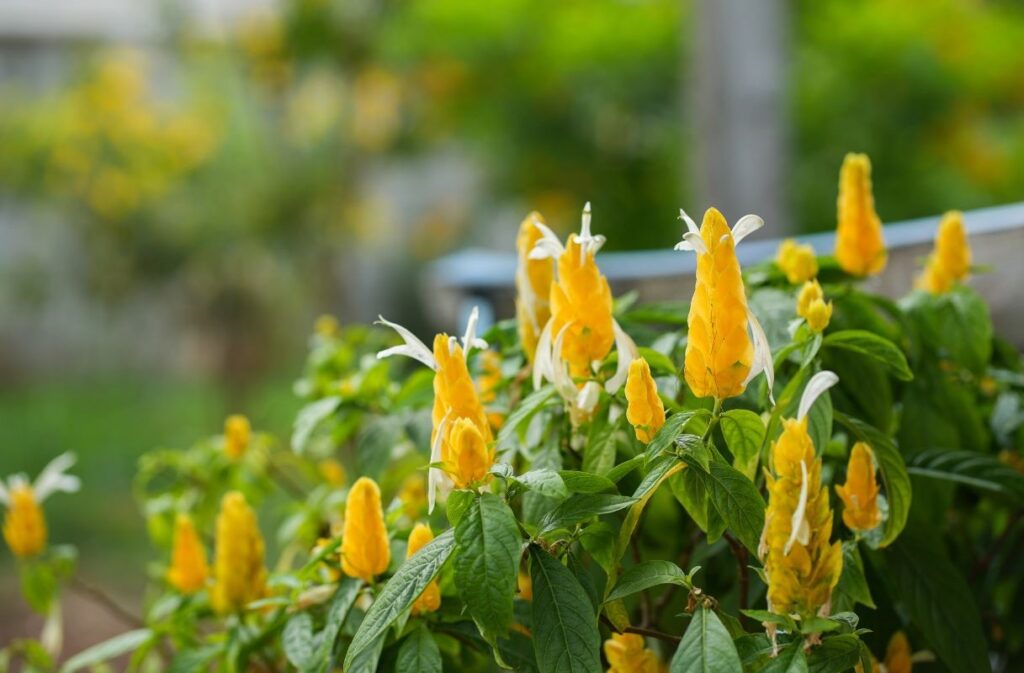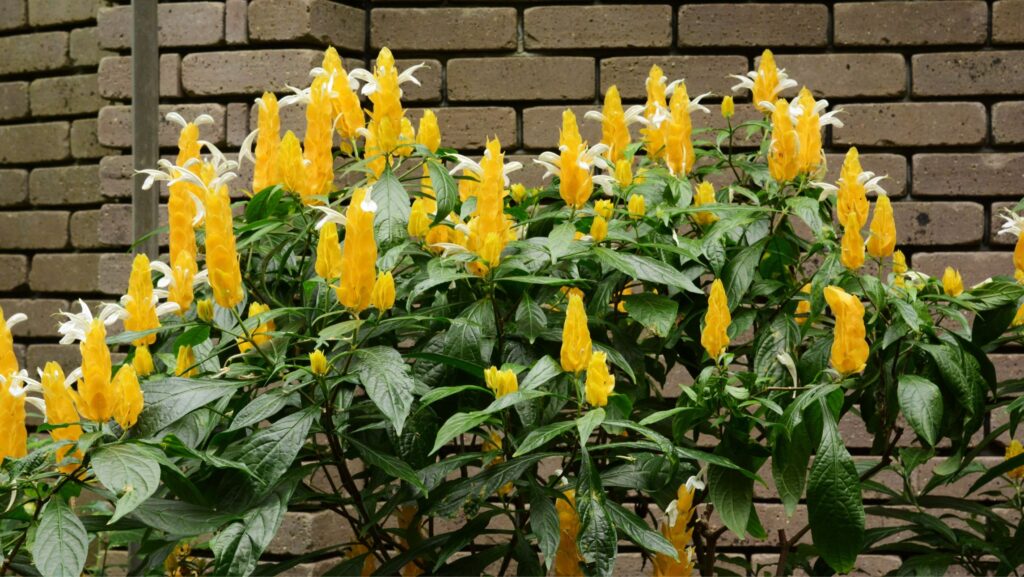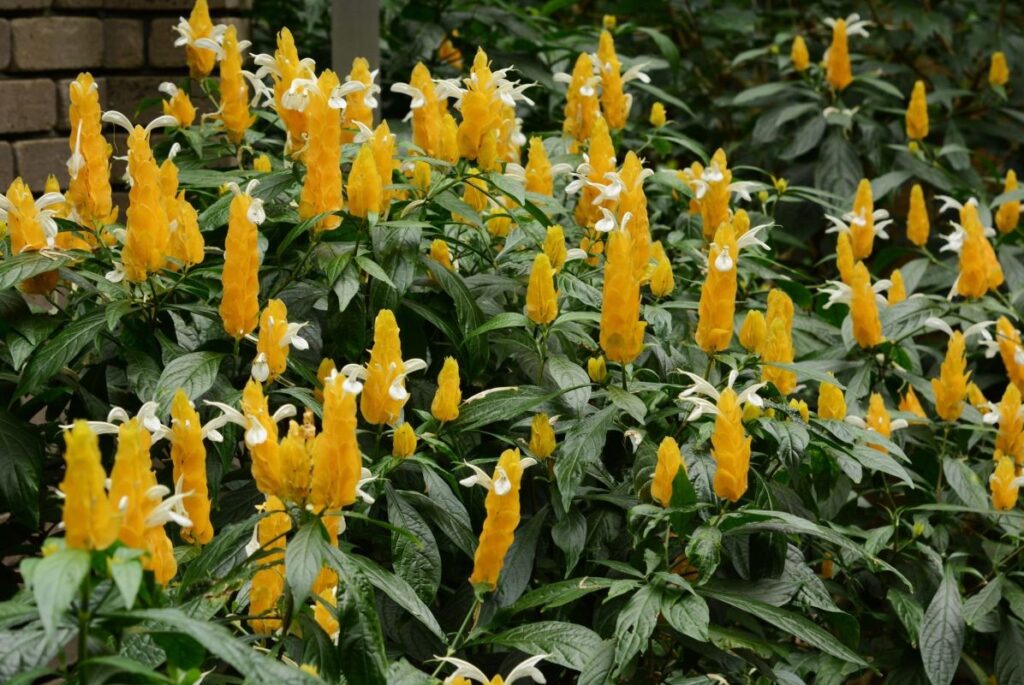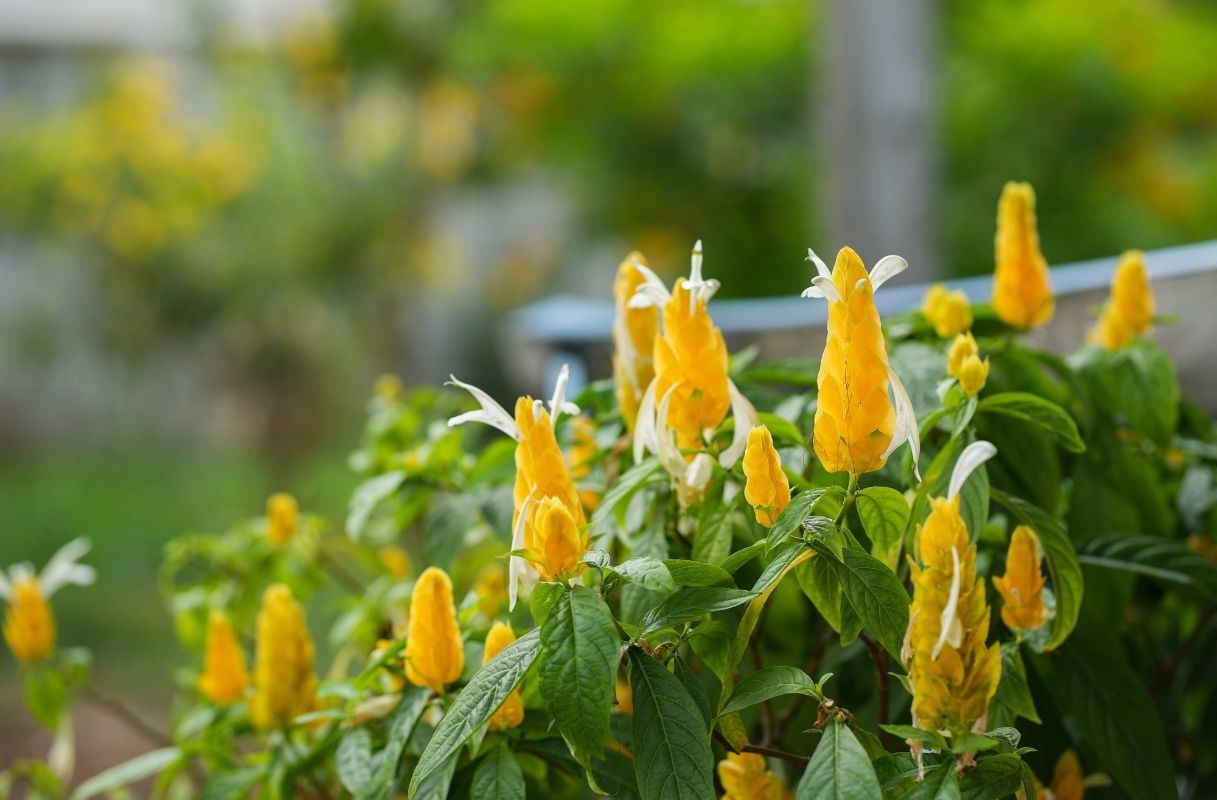Lollipop plants are a type of tropical evergreen shrub that produce bright, candy-like flowers. They are also known as golden shrimp plants or Pachystachys lutea. They can add a splash of color and charm to any garden with their vibrant, lush foliage and attractive blooms. In this article, you will learn everything you need to know about lollipop plant care, including how to grow them, where to find them, and how to maintain them.
What is a Lollipop Plant?
A lollipop plant is a tropical evergreen shrub that belongs to the Acanthaceae family. It is native to Central and South America, where it grows in warm and humid environments. It can reach up to 3 feet tall and 2 feet wide, with glossy green leaves and upright stems. The most striking feature of the lollipop plant is its flowers, which are cone-shaped clusters of yellow bracts with red or white tubular flowers emerging from them. The flowers resemble lollipops, hence the common name. The flowers can last for several months, providing a long-lasting display of color.

Some of the benefits of growing lollipop plants in your garden are:
- They are easy to grow and care for, requiring minimal maintenance.
- They are drought-tolerant and pest-resistant, making them ideal for low-water and low-maintenance gardens.
- They attract hummingbirds, butterflies, and bees, enhancing the biodiversity and beauty of your garden.
- They can be grown in containers, hanging baskets, or as ground covers, adding versatility and interest to your garden design.
Lollipop Plant Care: How to Grow and Care for Lollipop Plants
Lollipop plants are not very demanding plants, but they do need some basic care to thrive and bloom. Here are some tips on how to grow and care for lollipop plants in your garden:
Ideal Growing Conditions
Lollipop plants prefer warm and humid environments, similar to their native habitat. They can tolerate temperatures between 50°F and 90°F, but they may suffer from frost damage if exposed to temperatures below 40°F. Therefore, it is advisable to bring them indoors or cover them with frost cloth during winter if you live in a cold climate.
Lollipop plants also like partial shade, as direct sunlight can scorch their leaves and fade their flowers. They need about 4 to 6 hours of indirect sunlight per day for optimal growth and flowering. You can place them under a tree, a pergola, or an awning to provide some shade.
Soil and Watering Requirements

Lollipop plants need well-draining, loamy soil enriched with organic matter. You can use a potting mix designed for tropical plants or make your own by mixing equal parts of peat moss, perlite, and compost. You can also add some sand or gravel to improve drainage.
Lollipop plants need regular watering to maintain evenly moist soil. However, they do not like soggy or waterlogged soil, as this can lead to root rot and fungal diseases. Therefore, you should water them only when the top inch of the soil feels dry to the touch. You can use a finger or a moisture meter to check the soil moisture level.
You should also avoid wetting the leaves and flowers when watering, as this can cause fungal spots or rotting. Instead, water the soil directly or use a drip irrigation system.
Pruning and Maintenance
Lollipop plants benefit from regular pruning to promote bushier growth and enhance flower production. You should trim back any leggy or overgrown stems using sharp and sterilized pruning shears. You should also remove any faded flowers to encourage continuous blooming.
You can prune your lollipop plants anytime during the growing season, but it is best to do it in early spring before new growth begins. You can also pinch off the tips of new shoots to stimulate branching.
Fertilization
Lollipop plants need feeding with a balanced, water-soluble fertilizer every two to three weeks during the growing season (spring to fall). You can use a general-purpose fertilizer or one formulated for flowering plants. Follow the instructions on the label for the dosage and application method.
You should stop fertilizing your lollipop plants during winter when they are dormant or semi-dormant. You should also avoid over-fertilizing them, as this can cause leaf burn or reduced flowering.
Where to Find Lollipop Plants for Sale
If you want to grow lollipop plants in your garden, you have several options for finding them for sale. You can visit your local nurseries, garden centers, or online plant stores that sell tropical plants. You can also order them online from reputable sellers that ship healthy and well-packaged plants.
When choosing a lollipop plant variety, you should consider your garden’s color scheme and your personal preferences. Lollipop plants come in different colors, such as yellow, red, white, pink, or orange. You can mix and match different colors to create a stunning contrast or a harmonious blend.

Some of the most popular lollipop plant varieties are:
- Yellow Lollipop Plant: This is the most common and classic variety, with bright yellow bracts and red flowers. It is also known as golden shrimp plant or Pachystachys lutea.
- Red Lollipop Plant: This variety has red bracts and white flowers, creating a striking contrast. It is also known as cardinal’s guard or Pachystachys coccinea.
- White Lollipop Plant: This variety has white bracts and red flowers, creating a delicate and elegant look. It is also known as white shrimp plant or Pachystachys spicata.
- Pink Lollipop Plant: This variety has pink bracts and white flowers, creating a soft and feminine look. It is also known as pink shrimp plant or Pachystachys thyrsoidea.
- Orange Lollipop Plant: This variety has orange bracts and yellow flowers, creating a warm and cheerful look. It is also known as orange shrimp plant or Pachystachys lutea ‘Orange’.
Conclusion
Lollipop plants are a charming and vibrant addition to any garden. They are easy to grow and care for, requiring minimal maintenance. They produce colorful and long-lasting flowers that attract hummingbirds, butterflies, and bees. They can be grown in containers, hanging baskets, or as ground covers, adding versatility and interest to your garden design.
If you want to learn more about lollipop plants or other tropical plants, you can visit our blog (/blog/) or our gardening section (/gardening/). You can also browse our online store (/store/) for a wide range of indoor plants and other plants for sale. We offer high-quality plants at affordable prices, with fast and secure delivery.
We hope you enjoyed this article and found it helpful. If you have any questions or comments, please feel free to contact us. We would love to hear from you.
Happy gardening! 😊



